Over the past week I have identified three different fowl bluegrass (Poa palustris) samples sent in to the Purdue Plant & Pest Diagnostic Lab (https://ag.purdue.edu/department/btny/ppdl/). This is not concerning, just unusual. This is not a grass species that I see that often, but I have seen several samples this year, including a sample from my own lawn. By the way, my lawn has lots of weeds.
Fowl bluegrass is a common bluegrass species native to a large portion of the US. It is classified as a perennial, but acts like a weak perennial, much similar to Poa trivialis. This plant is more common in wet areas and taller meadows than in lawns and its larger stature (Judziewicz et al., 2014) and longer ligule distinguishes itself from other bluegrasses commonly found in Indiana lawns [Kentucky bluegrass (Poa pratensis), annual bluegrass (Poa annua), and rough bluegrass (Poa trivialis)].
Identification
Fowl bluegrass has the following characteristics (Hitchcock, 1935; NPT; Smith, 2014):
• Mainly bunch-type in growth habit but can have stolons
• Purplish base coloration
• Folded vernation (keeled sheath)
• Long membranous ligule (3 to 6 mm)
• 1 to 8 mm wide leaf blades
Samples I have observed also have:
• The ligule has an acuminate (tapering to a slender point) ligule
• The leaf sheath is open or split
• The leaf tip is boat shaped similar to other bluegrasses although the tip is more tapered than in Kentucky bluegrass or annual bluegrass.
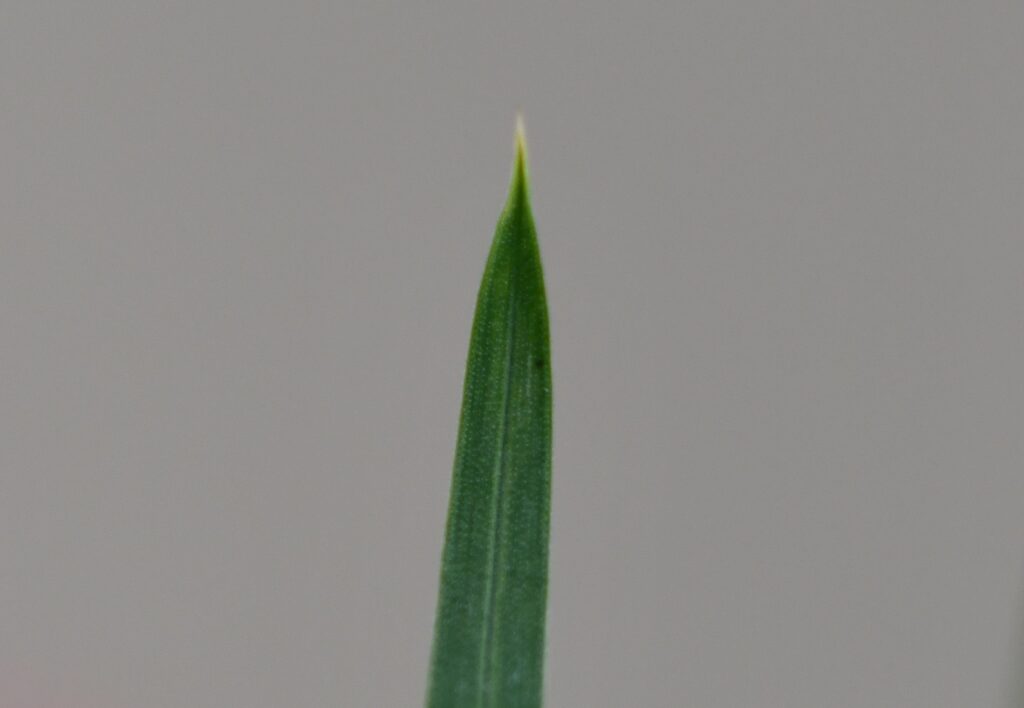
Boat shaped leaf tip.
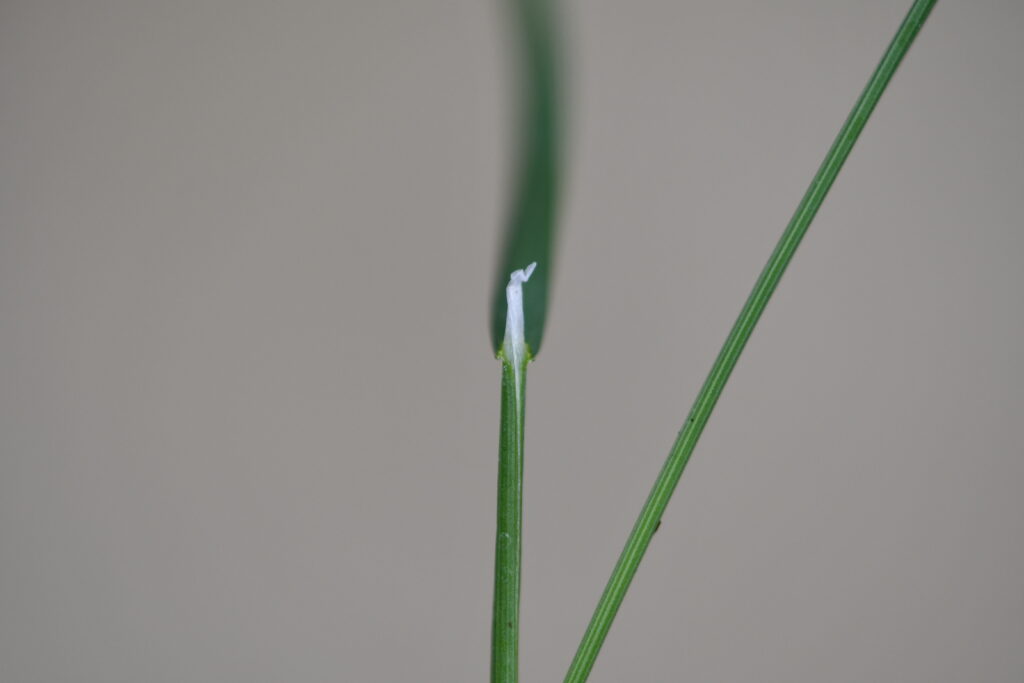
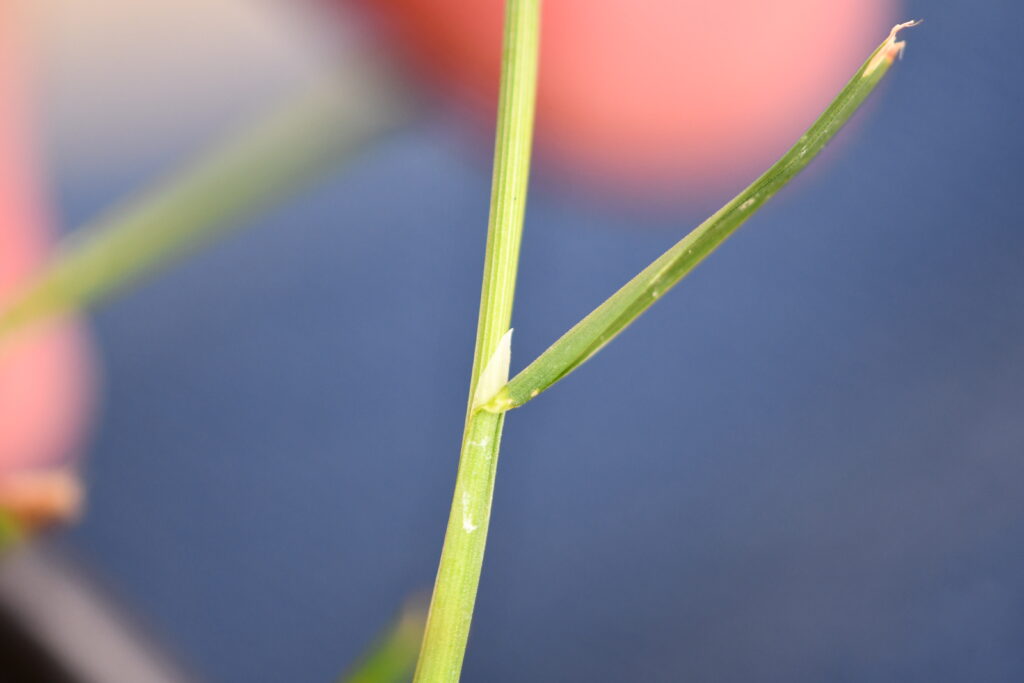
Long, pointed membranous ligule.
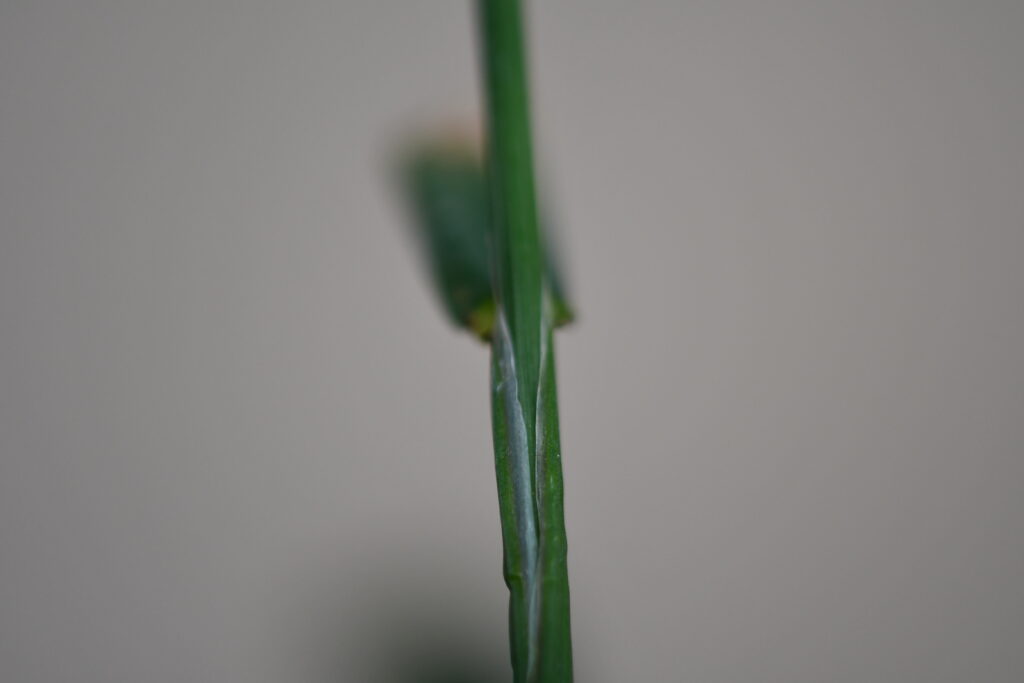
Split leaf sheath.
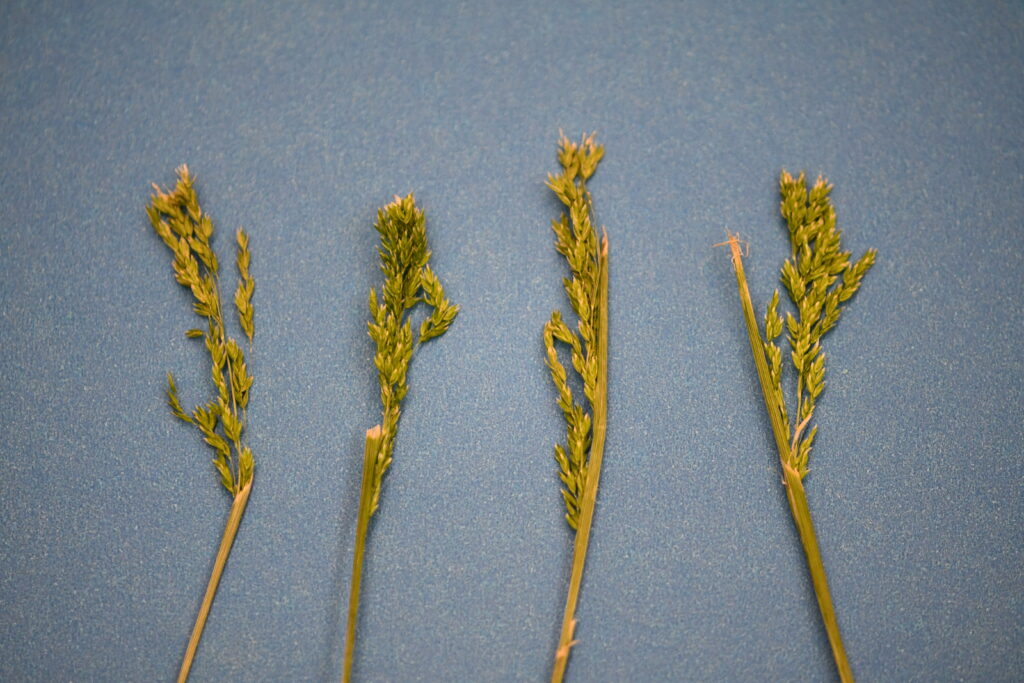
Seedheads before the panicles mature.
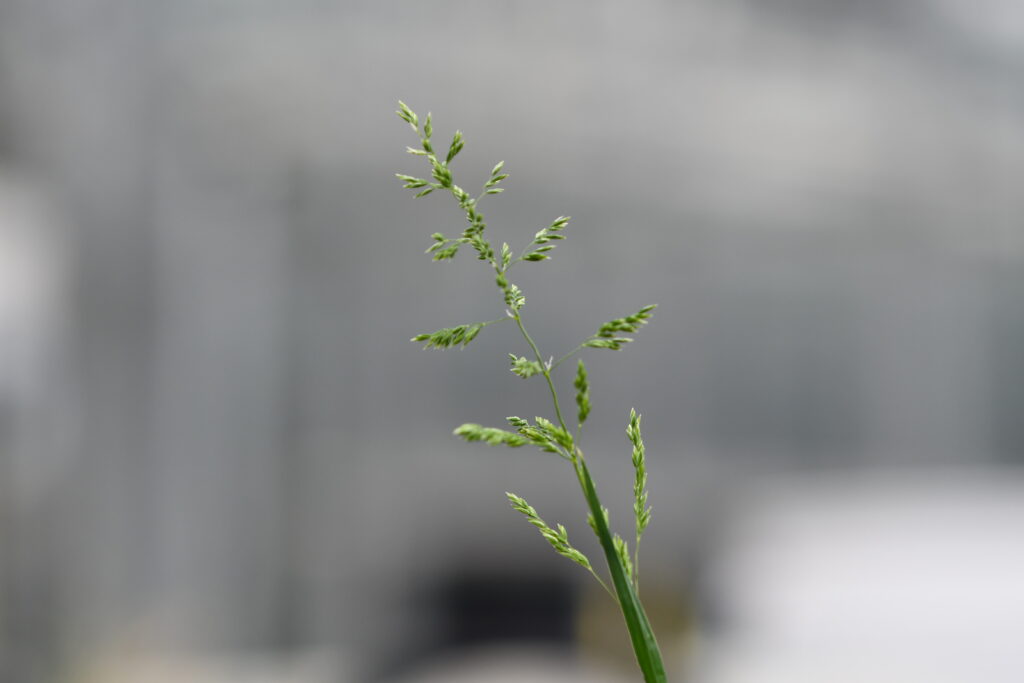
Mature panicle with the classic pyramidal-shaped seedhead common of bluegrasses.
Distinguishing it from other bluegrasses
• Fowl bluegrass lacks rhizomes or stolons which distinguish it from Kentucky bluegrass or rough bluegrass, respectively.
• Fowl bluegrass has a long, pointed ligule which distinguishes it from Kentucky bluegrass or rough bluegrass. The ligule on annual bluegrass is long, but not as long as fowl bluegrass.
• Fowl bluegrass plants will grow taller than other bluegrasses in spring.
• They all have a boat-shaped leaf tip and flower (produce seedheads) at a similar time of year so these are not helpful in distinguishing the species.
Where did these samples found in lawns come from?
They could have come from a nearby wooded area, meadow, pasture, or wet area. Further, the seed could have been dormant in the soil, or seed might have come in with straw or hay related to a recent seeding project.
How do I remove it from my lawn?
This plant will have vigorous growth in spring but should die or go dormant in summer due to poor heat and drought tolerance. However, it will produce seed if unmown and that seed will make this weed a problem next year. There are no herbicide recommendations for this weed although it likely has the same susceptibility to herbicides as Poa trivialis and Poa annua. Fall fertilization and seeding practices that produce a dense lawn should help reduce the invasion of this weed into thin spots.
If this topic is of interest to you, also see a previous turf tip distinguishing annual bluegrass from Kentucky bluegrass. https://turf.purdue.edu/which-is-it-annual-bluegrass-or-kentucky-bluegrass/
Sources:
1. Hitchcock, A. S. (1935). Manual of the grasses of the United States. USDA Misc. Publicat. No. 200.
2. Judziewicz, E. J., Freckmann, R. W., Clark, L. G., & Black, M. R. (2014). Field guide to Wisconsin grasses. University of Wisconsin Press.
3. Native Plant Trust (NPT): https://gobotany.nativeplanttrust.org/species/poa/palustris/
4. Smith, J. P. (2014). Field guide to grasses of California. In Field Guide to Grasses of California. University of California Press.